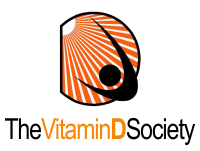Reference
Learn more about why vitamin D is important for your health with the Disease Prevention Chart
"Sunlight is not unhealthy. Precautions do need to be taken, but a regular moderate amount of unprotected sun exposure is absolutely necessary for good health"
- Dr. Michael F. Holick
Summer sun at noon contains ultraviolet A (95%) and ultraviolet B (5%). It’s the ultraviolet B (UVB) rays that make vitamin D in your skin. When UVB rays from sunshine reach your unprotected bare skin a reaction takes place within your skin where a cholesterol is changed to previtamin D.
UVB makes vitamin D naturally in your skin. The UV Index should be above 3 and your shadow smaller than you are. UVB is a short ray and needs to be directly overhead to penetrate the atmosphere and reach the earths surface. If the sun is shining on an angle the UVB rays are almost completely absorbed by the atmosphere. This is why the best time for making vitamin D is through sun exposure at midday when the UV index is above 3. Earlier in the morning or later in the afternoon, the sun is at an angle where most of the UVB rays are absorbed in the atmosphere. The further away from noon you go the less UVB is received from sunlight. Sun angle is also an issue in winter. The sun is on an angle and the UVB rays do not make it through the earths atmosphere so you cannot make vitamin D through your skin.
In northern latitudes like Canada you can make vitamin D from May through October at midday without sunscreen when the UV index is above 3. Other factors that affect your ability to make vitamin D through sun exposure:
- time of day, intensity of the sun, clouds, haze, pollution, body angle to the sun
- the amount of skin exposed. More skin provides more vitamin D, quicker with less chance of burning
- the length of time you are out in the sun
- the pigment of your skin. Longer exposure is required for darker skin types
- your age. Older persons lose some ability to make vitamin D
Know your skintype and condition of your skin. Everyone is different. You should never overexpose or burn your skin.
You can make up to 10,000 IU to 20,000 IU (250-500 mcg) through full body non-burning sun exposure. Vitamin D produced in the skin from solar UVB exposure does not lead to vitamin D toxicity and is considered safe, as the body limits its own production.
UVB does not penetrate glass or sunscreens above SPF8 if applied as directed.
A 20 year Swedish study of 29,518 women found that “women who avoid sun exposure are at an increased risk of all-cause death with a two-fold increased mortality rate as compared to those with the highest sun exposures."
- (Lindqvist 2014)
Vitamin D made naturally through your skin may have additional benefits:
"Vitamin D made in the skin lasts at least twice as long in the blood as vitamin D ingested from the diet. When you are exposed to sunlight, you make not only vitamin D but also at least five and up to ten additional photoproducts that you would never get from dietary sources or from a supplement."
-Dr. Michael F. Holick
“Sunbeds and summer sunshine are effective means by which to increase our serum 25(OH)D levels. The advantage of a tanning bed is that exposure to UV light can be controlled more precisely than casual sun exposure and thus can be safer than advising the public to guess at their own sun exposure from sunlight."
- Dr. Reinhold Vieth
A photon of light is a photon of light. The UVB produced in a sunbed or sunlamp is the same as the UVB found in sunshine. It provides the same risks and the same benefits.
Research studies have been done which shows that UVB exposure from sunbeds, sunlamps and even dermatologists phototherapy units produce vitamin D in participants.
“People who use tanning salons, specifically sunbeds that have UVB during the winter reach physiological blood levels (>100 nmol/L) of vitamin D"
- Dr. Samantha M. Kimball
Food sources play a supplementary or complementary role in daily vitamin D intake. Canadian research has estimated that the average Canadian gets approximately 300 IU or 7.5 mcg of vitamin D from food sources daily. (Vieth 2012). As discussed, adults need a vitamin D intake of approximately 4,000 IU or 100 mcg, per day.
Here is a list of some foods containing vitamin D:
- Salmon, Wild 988 IU or 24.7 mcg per serving, Farmed 250 IU or 6.25 mcg per serving
- Other fish options per serving, Herring (fresh 1628 IU or 40.7 mcg, pickled 680 IU or 17 mcg) Sardines (272 IU or 6.8 mcg), Canned Tuna (236 IU or 5.9 mcg), Shrimp (152 IU or 3.8 mcg)
- Eggs, 25 IU or .625 mcg
- Fortified milk, juice products, 100-200 IU or 2.5-5 mcg, per serving







